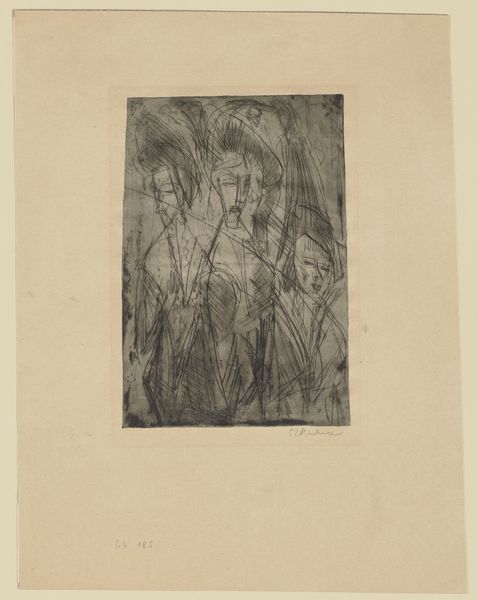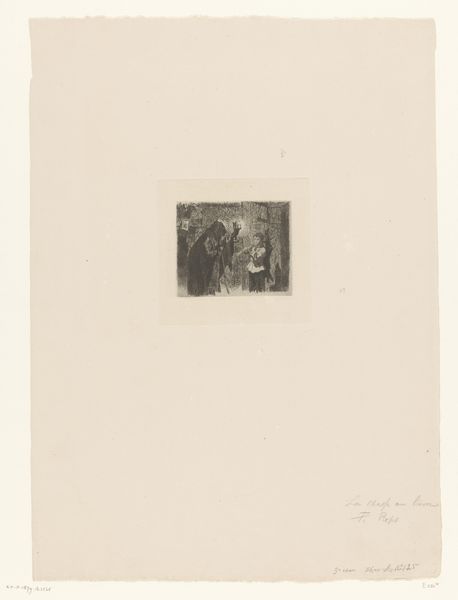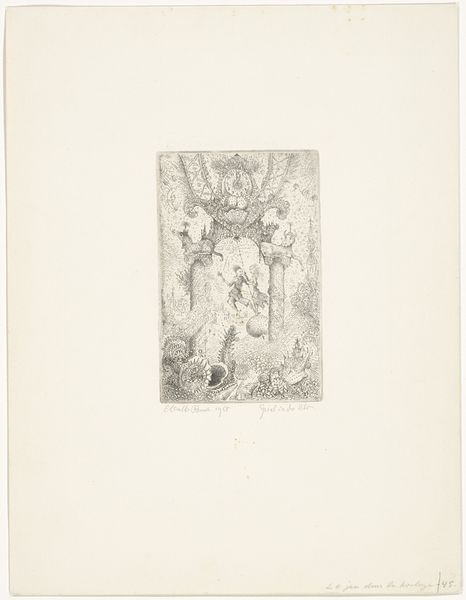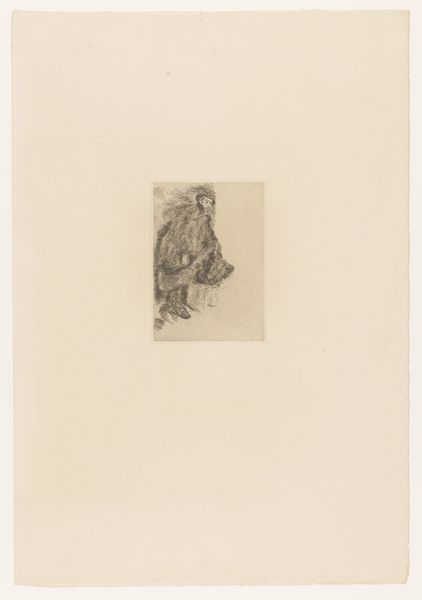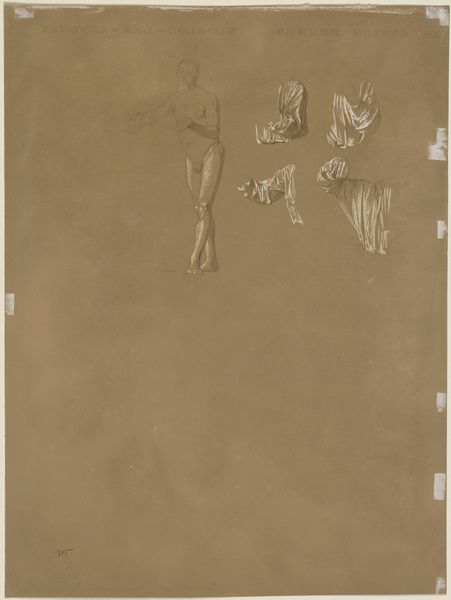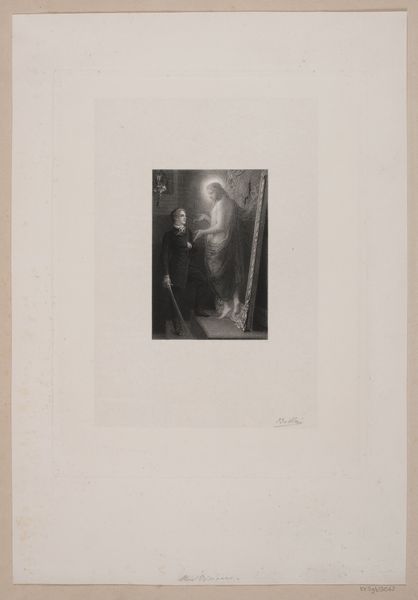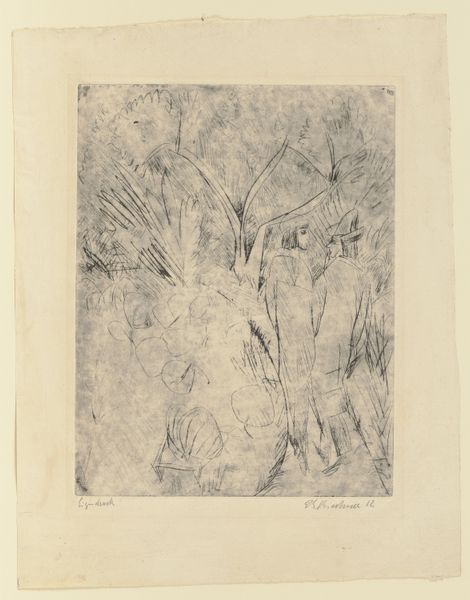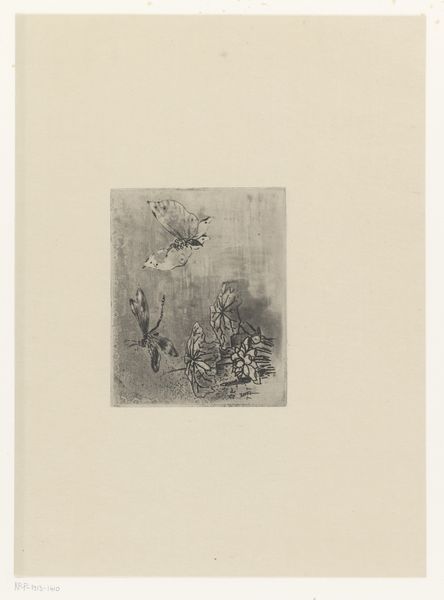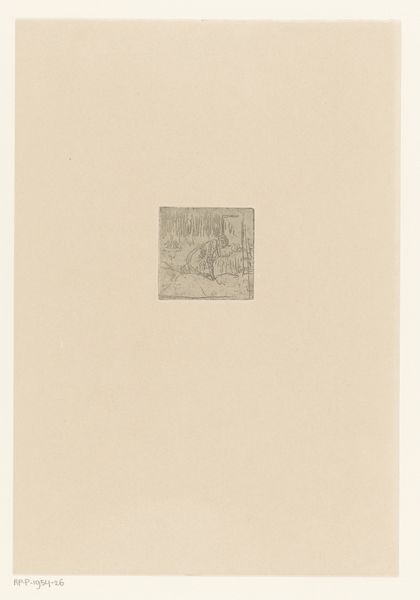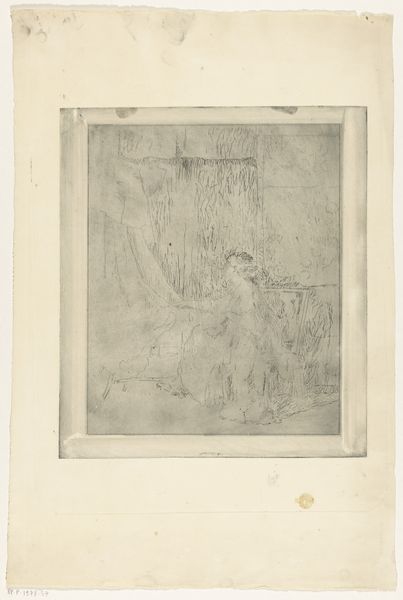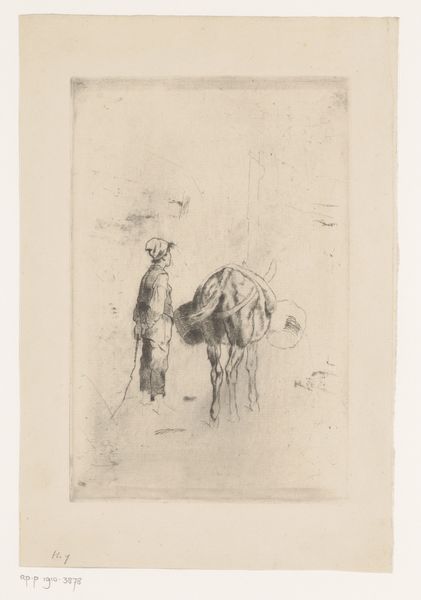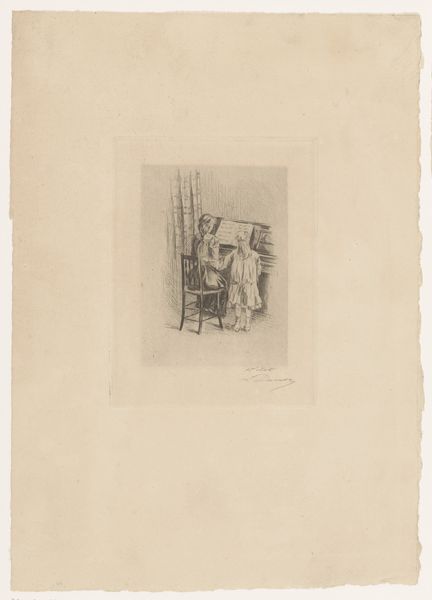
drawing, graphite
#
drawing
#
figuration
#
symbolism
#
graphite
#
nude
#
erotic-art
Dimensions: height 179 mm, width 180 mm
Copyright: Rijks Museum: Open Domain
Curator: Today, we’ll be discussing "Á Lesbos," a graphite drawing by Jules Pascin, likely created sometime between 1895 and 1930. Editor: It strikes me as incredibly intimate. The soft graphite lends a dreamlike quality to the figures, almost as if they’re emerging from a mist. Curator: Pascin’s skill in rendering form is evident, even in this seemingly simple drawing. Note the deliberate placement of the figures and the subtle contrasts that define their shapes. The use of light and shadow isn’t dramatic, yet it effectively conveys volume and texture. Editor: Indeed, and one can't ignore the loaded context of the artwork. The title explicitly references the Greek island of Lesbos, historically and culturally significant as the birthplace of the poet Sappho, who is famed for her lyrical poems celebrating female love. Pascin’s artwork enters a dialogue with a long tradition of representing female intimacy and sexuality. How might we understand his position, as a male artist, approaching this theme? Curator: That’s precisely the intriguing tension within this piece. Pascin navigates a complex dialogue between observer and observed, desire and representation. The soft, blurred lines contribute to an atmosphere of gentle voyeurism rather than overt exploitation. Editor: Perhaps, but let’s not shy away from interrogating power dynamics. Considering the historical gaze and male artistic privilege, it is imperative to explore Pascin's role critically. Whose perspectives are centered here, and whose are marginalized or erased? Curator: Fair enough. Looking solely at the aesthetic, though, one finds a sensitive handling of the human form. Pascin captures a certain languor, a relaxed sensuality devoid of vulgarity. The tonal variations create depth, imbuing the figures with a subtle inner life. Editor: And that internal life remains partly veiled, accessible yet ultimately enigmatic, as with much art depicting female sexuality. Ultimately, "Á Lesbos" invites continued conversations about art's role in shaping our understanding of intimacy, representation, and desire. Curator: I agree; considering Pascin's aesthetic choices offers an opportunity to analyze both his technical prowess and his conceptual intentions, or at least how they manifest within the formal elements of the artwork itself.
Comments
No comments
Be the first to comment and join the conversation on the ultimate creative platform.
